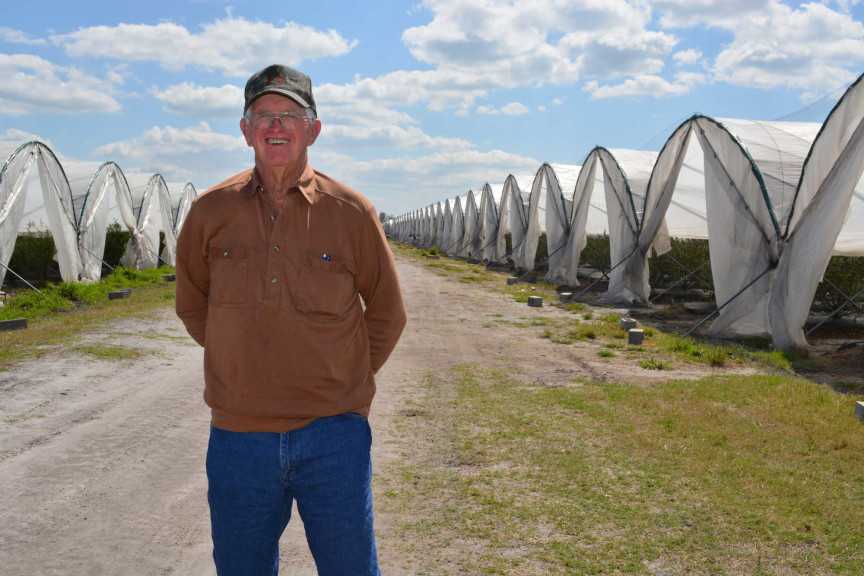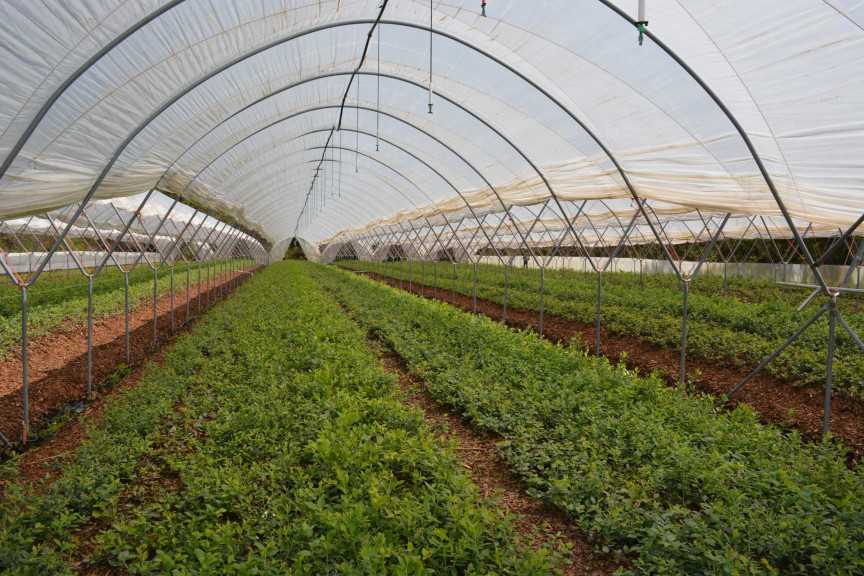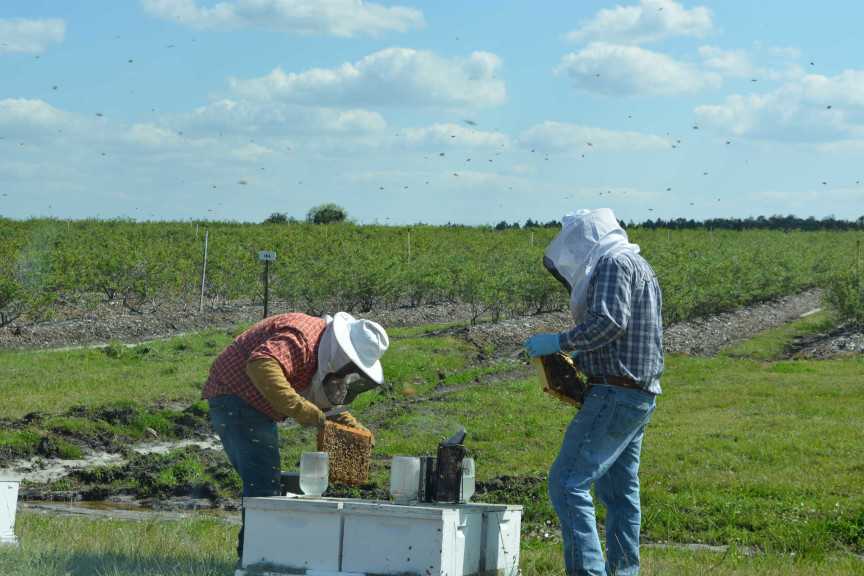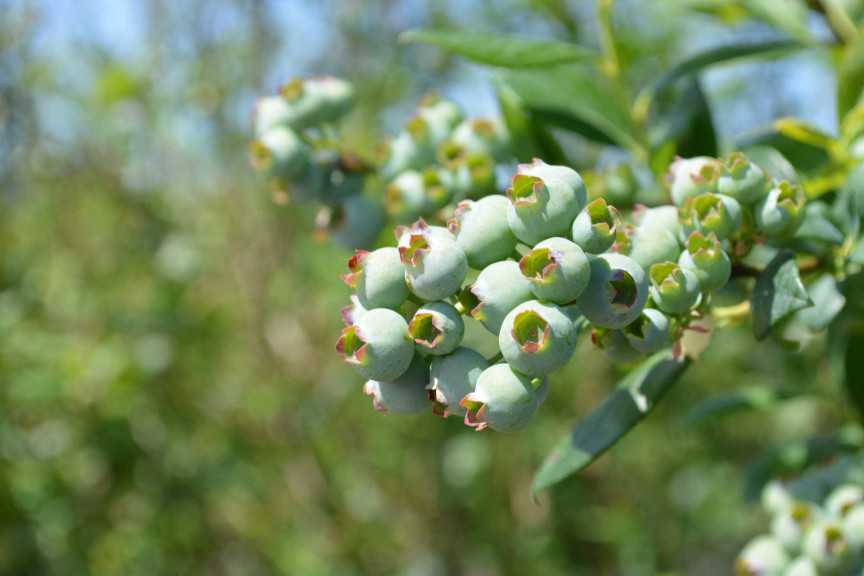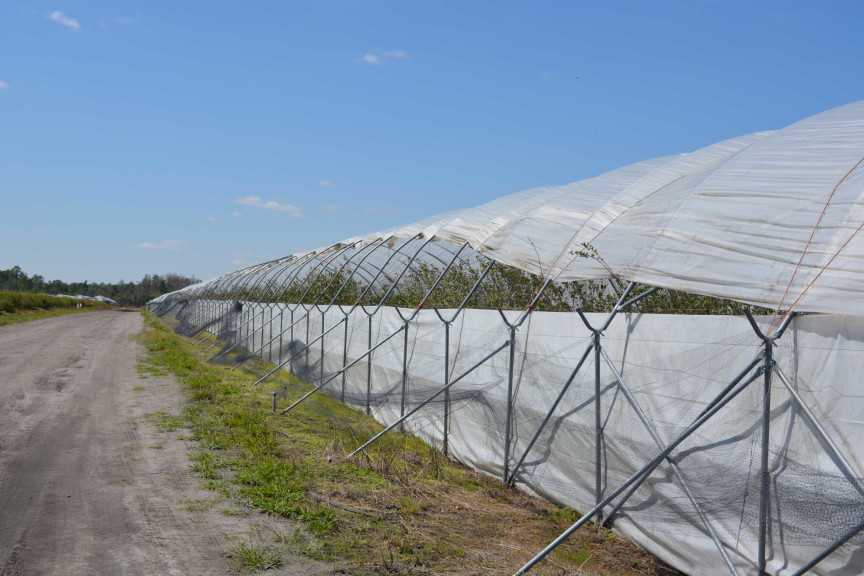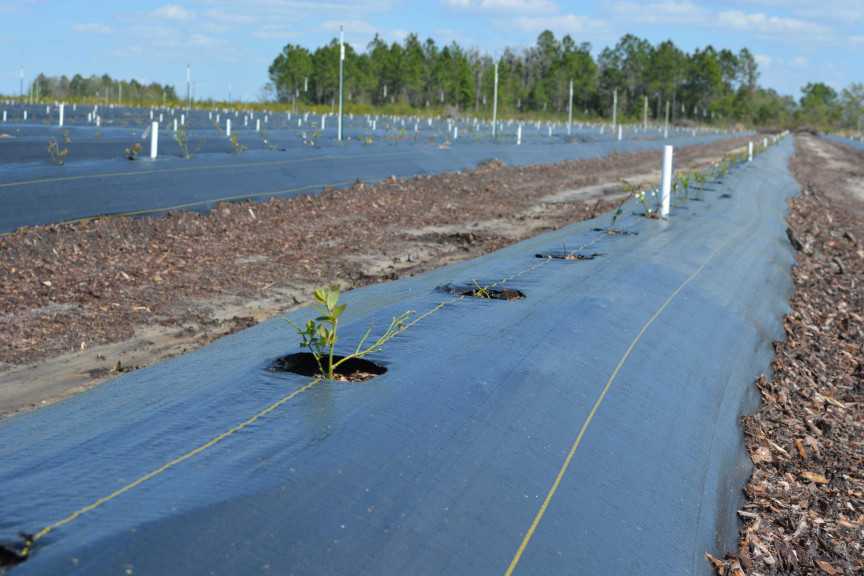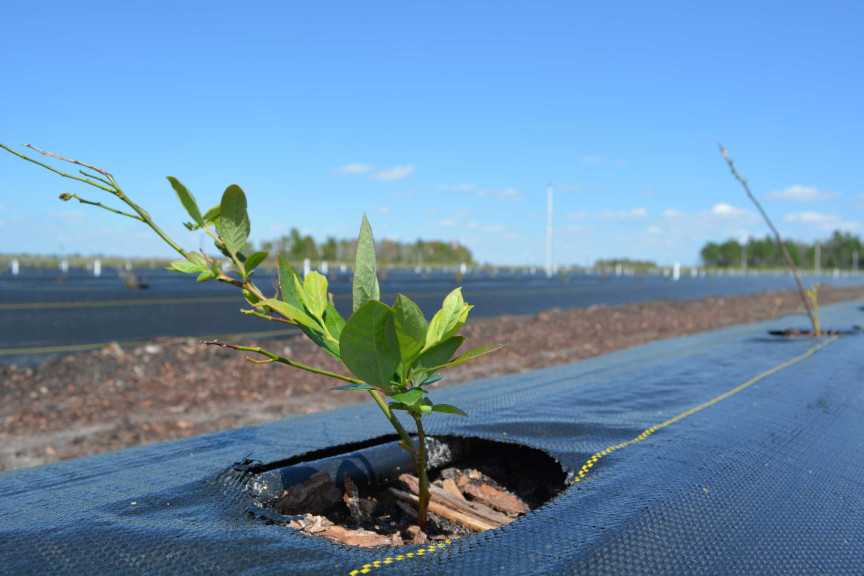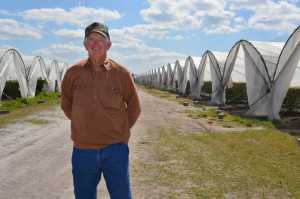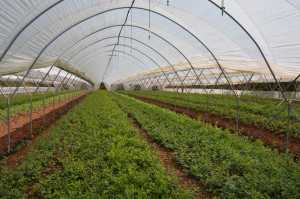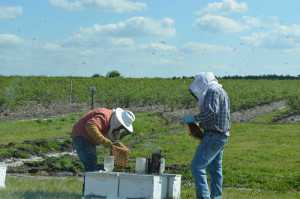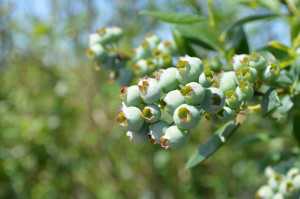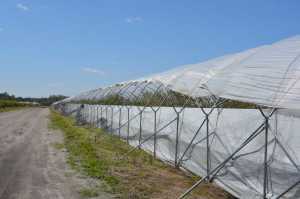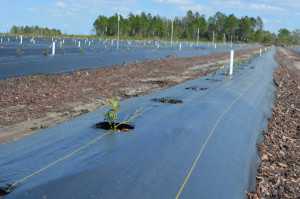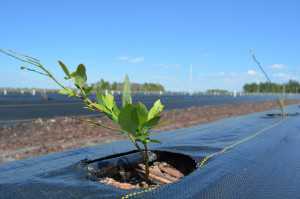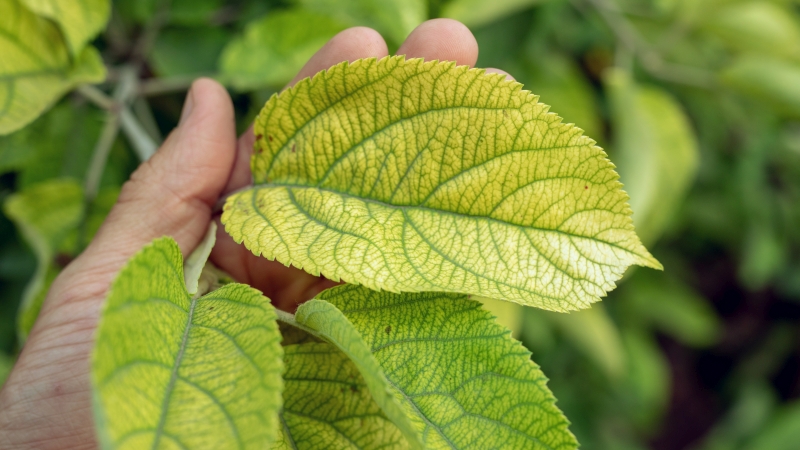Florida Blueberry Trailblazer Stays On Cutting Edge Of Innovation

[blackoutgallery id=”59343″]
It is rare that someone can claim two successful careers in their lifetime, but Alto Straughn is among them. The first came with the University of Florida (UF) where he served for 27 years as an Extension specialist on the Gainesville campus. The second came as a farmer, growing watermelons, blueberries, timber, and cattle. He has been growing crops now for 46 years.
To learn the history of blueberries in Florida, Straughn is a good place to start. He was chief among a handful of men who started the industry virtually out of scratch. He planted his first blueberries in 1983.
“At the time, it was myself and Bob Yancey and Jimmy Miller in this area (North Central Florida), so there really was not an industry to speak of,” says Straughn. “There was no market and we just sort of had to peddle them. You have to credit the Michigan Blueberry Growers Cooperative who started a deal down here. They were looking to expand and you’d become a member and they would market your berries.”
As growers gained more experience with plantings, UF’s original recommendation to plant rabbiteye varieties began to fall out favor and highbush plantings became the predominant selection. According to Straughn, Florida’s blueberry history is a progression of developing newer varieties with desirable traits and ones that fit the April market window best.
“You are looking for a good hardy plant that is early and makes a firm, crisp berry with a light blue blush that tastes great,” says Straughn. “I hear people say, myself included, that we need new and better varieties. The bottom line is over the past 25 to 30 years, the UF breeding program has brought us berries that are a lot bigger, firmer, and nearly a month earlier than what we had before. We’ve made terrific improvements in varieties.”
Straughn has played a critical role in variety development over the years cooperating closely with plant breeder Paul Lyrene, who is now retired but still active in the program. He also works closely with UF’s current breeder Jim Olmstead. Over the past 20 years, UF has evaluated 350 to 400 varieties on Straughn’s farms.
Historically, Star was the dominant variety planted on the farm. “We are not planting any more Star in Florida because a couple of viruses have come along and we can’t keep the plants alive,” says Straughn. “We also planted Windsor, which was named after our farm in Windsor. We’ve moved away from Windsor because it can have skin tear. We planted Millennia, too. There’s not too much Millennia planted anymore because it can sunburn even though it makes a big yield.”
The UF varieties Farthing and Meadowlark are the mostly widespread berries planted on Straughn’s acreage today. “Meadowlark is beginning to show some xylella problems, but we don’t know to what degree yet,” says Straughn. “It clogs up the vascular system of the plants, and the plants eventually die.
Indigocrisp will be the latest variety released by the University. “This will be one of our first varieties to really improve firmness and crispness,” says Straughn.
Future breeding efforts are placing an emphasis on mechanical harvest. “Mechanical harvest is going to become more important as labor availability becomes more of a challenge,” says Straughn. “Over the next decade or so, you are going to see larger growers moving to mechanical harvest after April 20. We are committed to that direction on this farm. Two seasons ago, we started planting some selected research varieties for mechanical harvest.”
Breeders are looking for a variety that can take the rough handling and not affect shelflife. The bases of the plants need to be smaller to avoid losing some of the crop on the ground.
Plant longevity is another priority for the breeding program. “If we are replanting every eight to 10 years, it is a huge cost for growers,” says Straughn. “It takes a year or two to get to good production, and then the final year or two, production falls off. Longevity is a major financial challenge and our breeders know it. Even two or three more years of longevity will be a major benefit.”
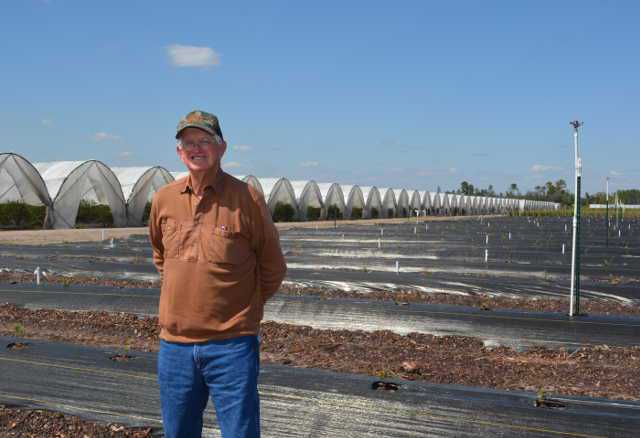
Alto Straughn
Photo by Frank Giles
Innovation Driven
Florida blueberry growers have looked to Straughn and his production practices because he stays on the cutting edge of innovation. He pioneered the use of pine bark culture and irrigation and fertigation practices in the state.
“Florida doesn’t have very good soil for blueberries,” he says. “But, blueberries and pine bark have a love relationship. When we did our first major expansion in 1999, we put in double-row pine bark beds and it turned out great. Ken Patterson [Island Grove Ag Products] and I were the first growers in Florida to grow berries in pine bark.”
Among his latest experiments is blueberry production under high tunnels. Currently, about 80 acres are being grown under Haygrove tunnels. Higher yields and earliness are Straughn’s major goals with protected production.
“A big part of my variety selection over the past 20 years has been driven by earliness,” he says. “UF has gotten us all the earliness we need and more. Now the question becomes — can we produce higher yields in the tunnels early in the high-price market window?”
With the right varieties, Straughn believes he can increase yields by 80% to 100%. Because the berry plants under the tunnel are evergreen, production runs January to June, so he is seeking varieties with concentrated fruit production from around the first of March until late April. Substantial harvest will get under way three to four weeks in advance of blueberries planted outside.
“We can keep the early berries in controlled storage for about three weeks before the high-priced market kicks in,” he says. “We have done a little work with controlled storage the last couple of years and the quality holds well for three weeks. By comparison, blueberries coming from Chile are in storage for five and six weeks. Those break down fast when you bring them to store temperature.”
As varieties go, Straughn says Chickadee has done well under the tunnel. “So far, I think it is the winner,” he says.
Another benefit of production under the tunnels is it takes about half the water to freeze protect on cold nights. “Two years ago, we lost about 60% of our outside crop to a mid-February freeze with high winds,” says Straughn. “We didn’t lose any under the cover, which went a long way toward paying for the tunnels right there.”
During harvest, pickers can start a little earlier because the tunnels help keep the dew off plants. On rainy days, harvest can continue under cover provided it is not too heavy of a rainfall event.
On the con side, Straughn says the high tunnels are expensive to establish relative to outside production. “They also are very labor intensive because of the need to vent the sides when it gets warmer,” he says. “You don’t want to let it get above 95°F under the tunnel because the plants will basically shut down. The amount of labor venting requires caught us a little by surprise.”
Serious Pest Challenge
Having been a part of the state’s blueberry industry since its inception, Straughn has seen challenges like new insects and diseases first hand. Growers and researchers have addressed the problems as they arise. But, he says the threat posed by the spotted wing drosophila (SWD) is probably the biggest challenge seen to date.
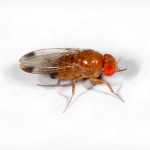
“If you get them in your blueberries, it is a major problem,” he says. “Spraying for the pest during harvest season has created a pretty substantial logistical problem. But, if you don’t spray, there is a good potential you could have your crop rejected.”
Straughn has been cooperating closely with Dr. Oscar Liburd, an entomologist with UF/IFAS, to learn more about managing SWD in Florida blueberries. Last year, Liburd conducted four studies on the farm that looked at insecticide rotation and postharvest intervals, off-season hosts for the pest, baits, and bait longevity.
“It is excellent to have a grower cooperator like Dr. Straughn,” says Liburd. “He is a leader in the Florida blueberry industry. Therefore, when we use his sites as demonstration plots, growers will be quick to adopt new practices because of his influence on the industry.”
Despite the challenges, Florida’s blueberry has continued to grow and prosper. And, much of what is known about growing blueberries in the state has been learned on Straughn’s farm through his cooperation with UF and an open door policy with fellow growers.
“There will continue to be an increase in blueberry acres all over the world,” he says. “In Florida, and in particular South Georgia, it has grown more than anywhere else. But, per capita consumption continues to increase. Nothing has done this industry more good than the steady flow of positive health news about blueberries. We’ve gotten hundreds of millions of dollars of free PR on good health news.”





